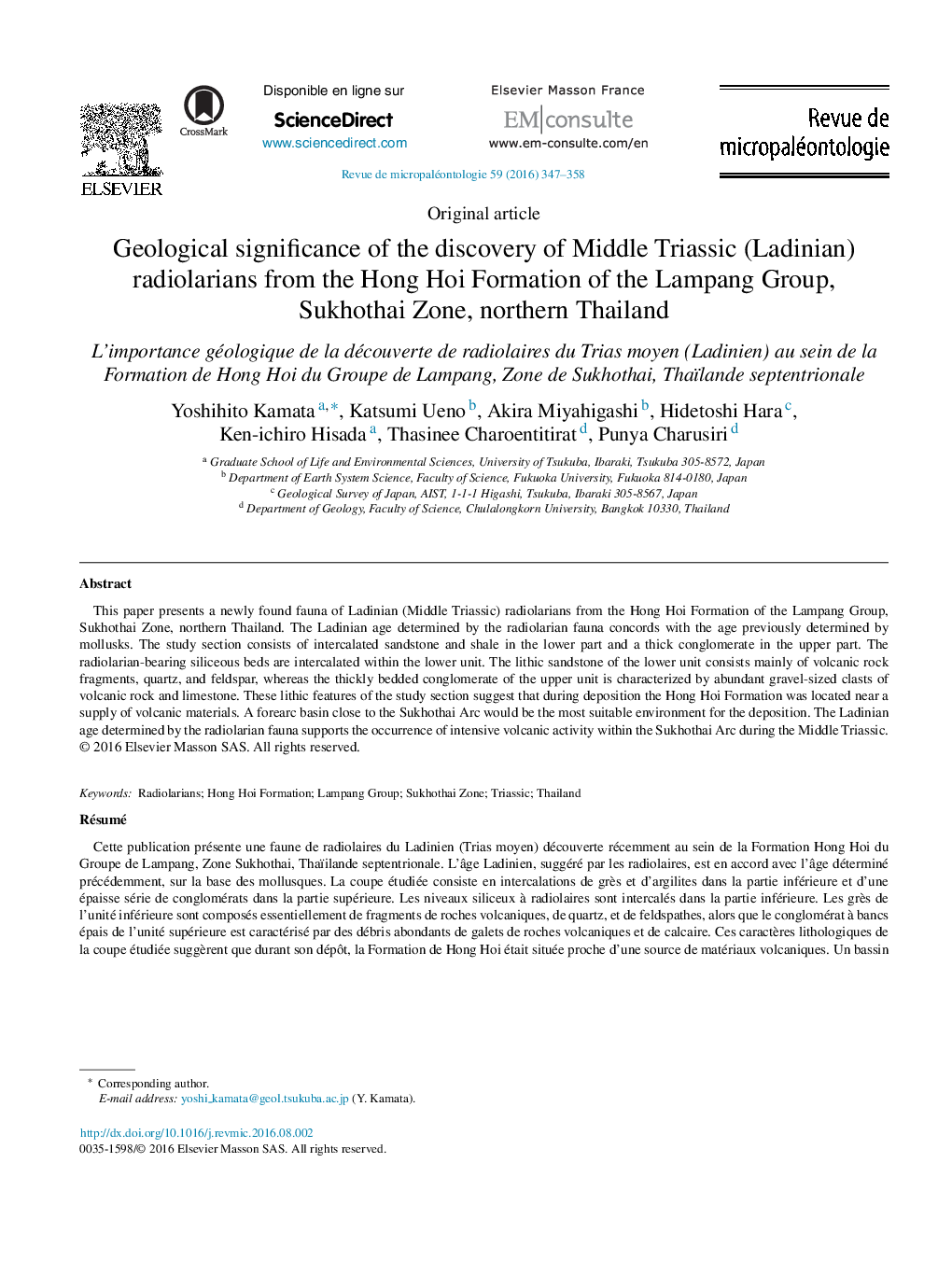| کد مقاله | کد نشریه | سال انتشار | مقاله انگلیسی | نسخه تمام متن |
|---|---|---|---|---|
| 5788464 | 1414247 | 2016 | 12 صفحه PDF | دانلود رایگان |

This paper presents a newly found fauna of Ladinian (Middle Triassic) radiolarians from the Hong Hoi Formation of the Lampang Group, Sukhothai Zone, northern Thailand. The Ladinian age determined by the radiolarian fauna concords with the age previously determined by mollusks. The study section consists of intercalated sandstone and shale in the lower part and a thick conglomerate in the upper part. The radiolarian-bearing siliceous beds are intercalated within the lower unit. The lithic sandstone of the lower unit consists mainly of volcanic rock fragments, quartz, and feldspar, whereas the thickly bedded conglomerate of the upper unit is characterized by abundant gravel-sized clasts of volcanic rock and limestone. These lithic features of the study section suggest that during deposition the Hong Hoi Formation was located near a supply of volcanic materials. A forearc basin close to the Sukhothai Arc would be the most suitable environment for the deposition. The Ladinian age determined by the radiolarian fauna supports the occurrence of intensive volcanic activity within the Sukhothai Arc during the Middle Triassic.
RésuméCette publication présente une faune de radiolaires du Ladinien (Trias moyen) découverte récemment au sein de la Formation Hong Hoi du Groupe de Lampang, Zone Sukhothai, Thaïilande septentrionale. L'âge Ladinien, suggéré par les radiolaires, est en accord avec l'âge déterminé précédemment, sur la base des mollusques. La coupe étudiée consiste en intercalations de grès et d'argilites dans la partie inférieure et d'une épaisse série de conglomérats dans la partie supérieure. Les niveaux siliceux à radiolaires sont intercalés dans la partie inférieure. Les grès de l'unité inférieure sont composés essentiellement de fragments de roches volcaniques, de quartz, et de feldspathes, alors que le conglomérat à bancs épais de l'unité supérieure est caractérisé par des débris abondants de galets de roches volcaniques et de calcaire. Ces caractères lithologiques de la coupe étudiée suggèrent que durant son dépôt, la Formation de Hong Hoi était située proche d'une source de matériaux volcaniques. Un bassin d'avant-arc, proche de l'Arc de Sukhothai, serait l'environnement sédimentaire le plus approprié pour leur dépôt. L'âge Ladinien déterminé par la faune des radiolaires soutien l'hypothèse d'une activité volcanique intense au sein de l'Arc de Sukhothai durant le Trias moyen.
Journal: Revue de Micropaléontologie - Volume 59, Issue 4, OctoberâDecember 2016, Pages 347-358